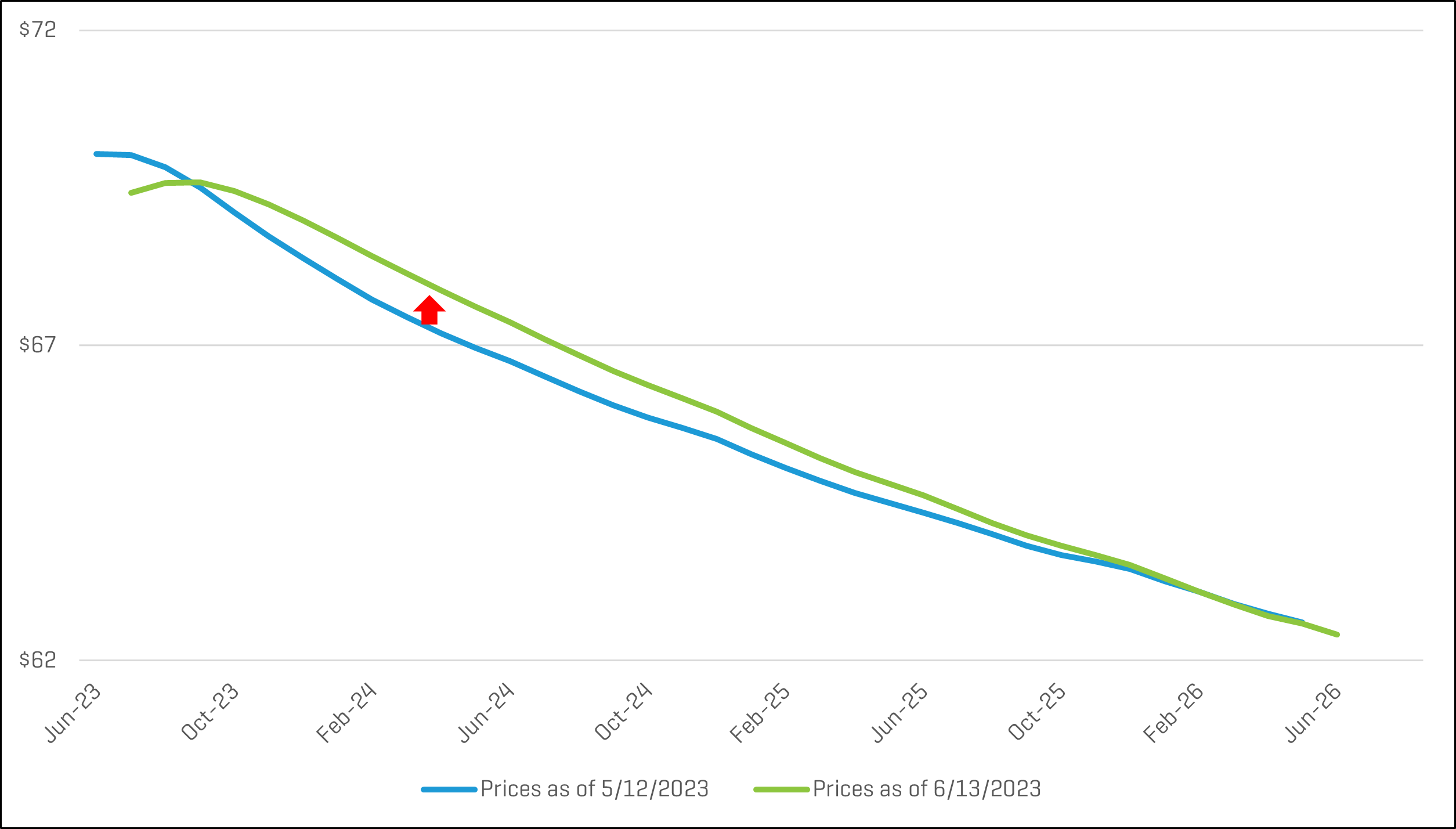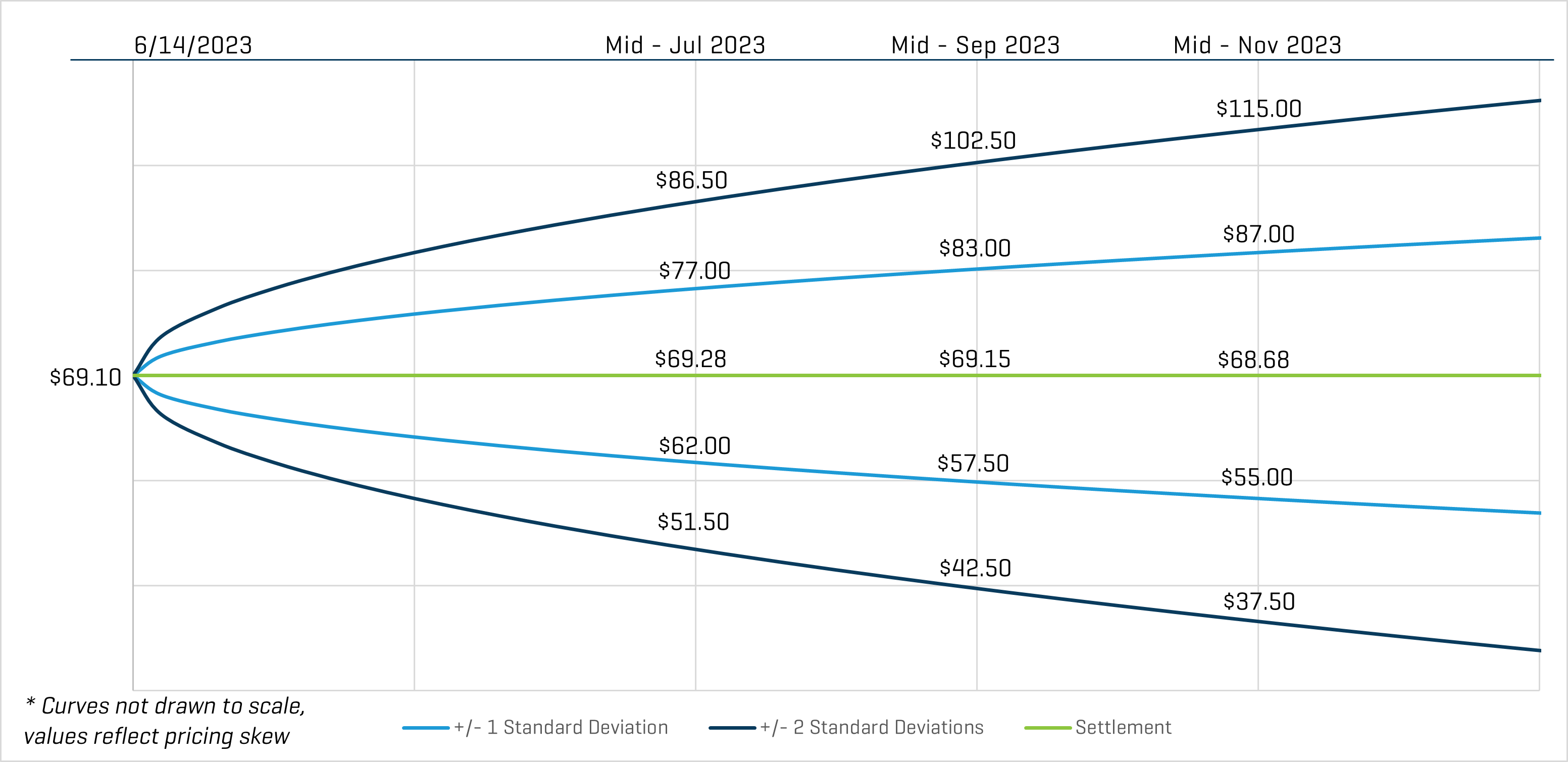Saudi Arabia Pledges to Cut Oil Production to Counter Economic Headwinds
Saudi Arabia Pledges to Cut Oil Production to Counter Economic Headwinds
Recently, oil prices rose again after Saudi Arabia pledged to cut production by a further 1 million barrels per day (bpd) starting in July to counter macroeconomic headwinds that have depressed oil pricing markets. The Saudi energy ministry said the kingdom’s output would drop to 9 million bpd in July from about 10 million bpd in May. The voluntary cut, Saudi Arabia’s biggest in years, is on top of a broader deal by the Organization of the Petroleum Exporting Countries (OPEC) and its allies including Russia (collectively known as OPEC+) to limit supply into 2024 as OPEC+ also is seeking to boost oil prices (note that OPEC+ pumps about 40% of the world’s crude and has cut its output target by a total of 3.66 million bpd, amounting to 3.6% of global demand).1
That the Saudis felt another cut was necessary underlines the uncertain outlook for demand for fuel in the months ahead. There are concerns about economic weakness in the U.S. and Europe, while China’s rebound from COVID-19 restrictions has been less robust than many had hoped.2
The recent move by the Saudis is counter to Goldman Sach’s announcement on June 12, 2023, that it was reducing its December forecast for global benchmark crude prices by almost 10% this week, partly attributing the move to higher-than-expected supplies from Iran and Russia.3 Goldman cut its December 2023 Brent oil forecast to $86 a barrel from $95, citing “significant supply beats from Iran and Russia that have “driven speculative positions to near record-lows.” It also lowered its 2023 Brent forecast to $82 from $88 and its 2024 forecast to $91 from $99.
Going forward, it will be interesting to watch supply and demand for oil reach a new equilibrium as the Saudis reduce their production as other countries attempt to offset the reduced volumes.
WTI Strip Prices Flat
Spot prices and futures prices for the West Texas Intermediate (WTI) contract decreased by approximately $0.50 per barrel in the near term and remained relatively flat over the longer term.
WTI Strip Prices - One Month Change

As shown, the oil price curve remains in a state of “backwardation,” reflecting the market’s expectation of lower future spot prices.
Oil Price Outlook
The price distribution below shows the crude oil spot price on June 14, 2023, as well as the predicted crude oil prices based on options and futures markets. Light blue lines are within one standard deviation (σ) of the mean, and dark blue lines are within two standard deviations.
WTI Crude Oil $/BBL

Based on these current prices, the markets indicate there is a 68% chance oil prices will range from $57.50 and $83.00 per barrel in mid-September 2023. Likewise, there is roughly a 95% chance that prices will be between $42.50 and $102.50. By mid-November 2023, the one-standard deviation (1σ) price range is $55.00 to $87.00 per barrel, and the two-standard deviation (2σ) range is $37.50 to $115.00 per barrel.
Key Takeaways
Rember that option prices and models reflect expected probabilities, not certain outcomes, but that does not make them any less useful. So far in 2023, crude oil prices have primarily remained within the range of $70 to $80 per barrel. As such, we have seen volatility decrease significantly compared to 2022, which is evidenced by the futures price ranges observed. For mid-November 2023 pricing as of June 14, 2023, the 1σ range had a spread of $32.00 per barrel, and the 2σ range has a spread of $77.50 per barrel. For comparison, in 2022 we observed 1σ and 2σ price ranges in excess of $65.00 and $150.00, respectively.
- “Oil rises on Saudi plan to deepen output cuts from July,” Stephanie Kelly, Reuters, June 5, 2023.
- “Saudi Arabia is slashing oil supply. It could mean higher gas prices for US drivers,” David McHugh, AP News, June 6, 2023.
- “Goldman Sachs cuts its December Brent oil-price forecast by nearly 10%,” Myra P. Saefong, MarketWatch, June 12, 2023.






